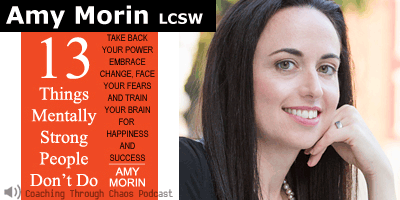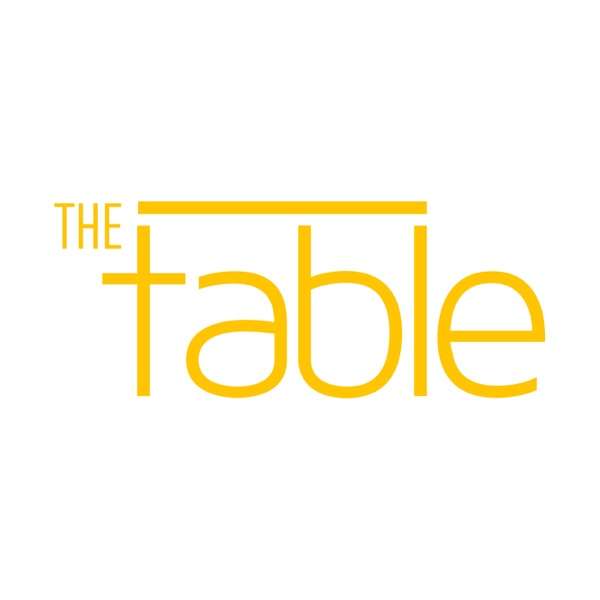The topic is codependency: what it is and what it is NOT; the difference between normal and codependent behaviors and what a person can do to help themselves.
Do you know someone who has
- a need to be perfect,
- low self-esteem,
- poor boundaries with others,
- a need to control their environment, and
- chronic dissatisfaction in relationships ?
If those descriptions ring a bell, you probably know someone who may be considered 'codependent'.
If you’re into self-help at all, you probably have heard the term codependency- it’s often talked about it in terms of one having a codependent personality. I want to be clear that codependency is NOT a diagnosable condition, although it is talked about in those terms. You may also have been familiar with it, but have been unsure of a clear definition of it. That’s because there is not 1 universal definition of it. There is however, consensus that it is a cluster of behaviors in relationships which can be somewhat easily identified and very often problematic.
The history of the term dates back to the 1940s and early 1950s. Primarily it was identified in studying the behavior of an alcoholic within the context of their family experience. The behaviors identified as codependent appeared to be a pattern in these families. The use of the term seemed to explode though a few decades later. In the 1980s with the advent of a focus of family system dynamics, several books came out designed to help people break those dysfunctional behavior patterns. The most famous book that still is referenced today on the subject is Melody Beattie's "Codependent No More". During that time, everyone started studying the families of alcoholics and saw these behaviors but as the clusters of behaviors became more recognizable, so did the fact that so many other people exhibited the same behavior patters who did not come from alcoholic families. The term is now popularly used to generally describe a cluster of behaviors in relationships.
Codependency Decoded
This article accompanies Episode 4 of The Coaching Through Chaos Podcast and focuses on behavior in relationships that have come to be identified as “codependent behavior”. We will explore the behavioral patterns that are identified as codependent, suspected causes of these behavioral patterns, some things a person can do to change their codependent behavior and some additional resources so you can learn more about the subject.
Darlene Lancer,JD, LMFT of Whatiscodependency.com and darlenelancer.com
My expert guest is Darlene Lancer, Licensed Marriage and Family Therapist in Santa Monica, Ca. She has dedicated her career as a therapist to helping people work through and overcome their struggles with codependent behavior. She has several books published on the subject including “Shame and Codependency” and “Codependency for Dummies”.
What is Codependency?
Codependency is a term that came into popular psychology culture in the 1980’s, although it’s been around since the 1940s. With the advent of family systems psychology coming into its own in the 1970’s, the studies of family dynamics appears to have been a factor in the movement towards identifying codependent behavioral interactions in the 1980’s. For as much as it is widely used in popular psychological vernacular, it does not have a universal definition, but rather it is used to describe a common set of behavioral patterns. In the 1950’s, codependency was viewed as learned behavior in families of alcoholics or addicts. It was first used to describe the personality traits of people who were typically in relationships with alcoholics – this could be intimate relationships or in families with alcoholics.What researchers and therapists have discovered since then is that, although there is certainly a pattern of behaviors associated with those addict/alcoholic families, they are not all that different than some of the behaviors of families with other sorts of emotional struggles (we will discuss further in what causes codependency). When it was first introduced, the term codependency was used as a shortcut to describe the codependent person’s need for approval from others and the self-sacrificing nature of their own emotional needs. When we (therapists) work with persons who are codependent, the self-sacrificing and approval seeking are common themes.
When you read on and see the list of behaviors associated with codependency you will recognize that these behaviors are prevalent in the general population and are not necessarily reserved for those in addict/alcoholic families. The term is now universally accepted as a description of a cluster of behaviors that dictate how a person acts in a a relationship.
What Codependency is NOT
Codependency, although discussed in terms of “symptoms” and a “condition” for which “treatment” can be provided is NOT actually a diagnosable psychiatric disorder such as anxiety or depression. There were attempts at having it entered in the Diagnostic & Statistical Manual (the diagnostic text of the mental health profession), but it was not accepted as a clinical disorder. The cluster of behaviors is, however, considered to be emotionally stifling and resentment-breeding for both the person who is codependent and the person they love. The good news then, is that since it is not a “personality disorder”, which by definition is an ingrained and unchangeable part of us since it’s part of our personality, if you recognize yourself as orienting yourself in codependent ways, you can make changes to engage in ways which are more fulfilling and satisfying for you.
Are you Codependent?
This article is not meant for you to find a reason to label yourself or anyone else, but it can be helpful to explore the behaviors that are considered, when clustered together, to represent what we know as a ‘codependent’ person. Most people can relate to some of these behaviors some of the time. If one is to consider themselves as orienting themselves in a codependent way, they should recognize their interactions as a prolonged, pervasive pattern of these behaviors which have left the person feeling unsatisfied and resentful in their relationships.
Some of the key characteristics of a codependent person are:
- Low Self-Esteem: We’ve all heard the term. It’s when someone just doesn’t think too much of themselves. They usually don’t think they deserve as good as everyone else. This trait on its own can lead people to make poor judgment calls in their relationships – typically they pick people who can’t or won’t fully love them. They might engage in relationships with people who are emotionally unavailable (i.e. married or otherwise involved with someone else, addicted to drugs or alcohol, or a workaholic). They have a tendency to stick with an unsatisfying relationship long past recognizing that it is such.
- Poor Boundaries with others: This can present itself in different ways. Most typically it’s a person who is over-involved in others’ lives. Often, this is an unwelcome over-involvement, as with the case of the spouse of an addict. Because they may not trust their addicted partner (due to the addict behaviors) they have a tendency to “need to know everything”. They will also share with everyone. The “town gossip” has poor boundaries. That person is easier to see because we usually have a visceral reaction when someone tells us something we shouldn’t know about someone else. As a couple’s therapist I hear stories all the time of over-involved in-laws or siblings. It’s the person who has something to say about everyone’s relationship. Poor boundaries also cross-over with people pleasing traits. A person with poor boundaries will also take on everyone else’s problems, volunteer to help when they have their own needs to tend to that go over-looked, and generally have a difficult time saying “no” to others. Their motivation is NOT malicious. It falls in line with the people pleasing motivation – that they are afraid if they say “no” to someone, they won’t be liked or loved anymore. It’s usually easy to teach a person to set healthier boundaries in relationships once this gets identified.
- People Pleasing: One of the behaviors that breeds the most resentment in a codependent relationship is that the codependent person has a pervasive desire to be liked by everyone. The codependent person will set aside their needs for everyone else’s. They do it under the guise of “being nice” or “being a good person”, but they end up resenting the people they are trying to please when they feel they are not getting the same self-sacrificing behavior in return. The previously-mentioned low self esteem drives them to give much more in a relationship that they ever expect, received or think they deserve. They often give much more of themselves even at the beginning of new relationships. When you see someone taking on their new partner’s problems right at the beginning of the relationship (i.e. lending money, letting them move in right away, getting involved in their family problems, etc.) you are most likely witnessing a codependent person in action.
- Care taking: The codependent person has a need to care take for others that far exceeds any sense of expected behavior. They are naturally nurturing, but the often “care too much”. This can be exhibited in behavior that appears to be over-doing for others. While everyone likes have a friend or a partner that is nurturing, the level the codependent person takes it to is suggestive of controlling through their care taking. The motivation for this appears to be two-fold: 1. their partner can’t let them down by not attending to their needs and 2. They have control of that environment (keep reading to see more about the need for control).
- Reactive: The codependent person typically feels their emotions deeply and are often overly sensitive and can perceive themselves as being criticized by others, particularly their partner, which leads to reactions that appear out of sync with the situation.
- Controlling: As mentioned in the people pleasing section, the codependent person has a need to control their environment and their relationship. This appears to be out of a need for safety- if they control their environment, they convince themselves that they can trust it. We know that is not an accurate perception as when dealing with 2 people in a relationship we can never fully control what the other person thinks, feels, or does. The codependent person convinces themselves into a false sense of security which allows them to move forward in relationships that often have stresses, or “red flags” that go unnoticed or denied.
- Dependent: The codependent person is not necessarily dependent on their partner for financial or other stability factors, but rather, they are dependent on the relationship usually out of a fear of being alone. They attach strongly to their partners and become helpless to express their own emotional needs out of a fear of abandonment.
- Engages in Denial: This is usually pretty easy to see as an outsider looking in on a relationship between a codependent and their partner. As the concept of “red flags” was introduced earlier, they are often ignored or otherwise overlooked by a codependent person in order for them to maintain congruence between what they believe their relationship to be and what it actually is. This is a tough factor and this is usually very strong when the codependent has become involved with someone with addiction issues. They can often overlook the substance abuse problem for a long time. It is not unusual for a codependent person to engage in making excuses for their partner’s behavior, for instance, “Oh she wasn’t drunk – he was on migraine medicine from her doctor”.

What if you have these traits?
In exploring this list, I should note that codependency should be viewed through a contextual and cultural lens.
There are definitely cultures I can think of in which the matriarchs over-function and care-take for the family, they get in everyone’s business (poor boundaries), they live to please their family and they are seemingly so dependent on their family it appears they would not be able to survive without them. In some cultures, we call that person “Grandma”. So please remember, this is meant to inform you, rather than diagnose or label anyone.
After viewing these behaviors within your contextual environment, if you recognize them in yourself, there are ways to modify your behavior so that you don’t feel driven to meet other people’s needs before your own leading you to feel more fulfilled in your relationships.
What causes codependent behavior?
In addition to the focus on the codependent behavior being born out of families in which addiction was present, there are theories around the origins of codependent behavior developing in families in which the codependent person was raised by a narcissistic parent. We know that although they may love their children, when sick with the disease of addiction, addicted parents are emotionally unavailable to them. With narcissists the crux of the disorder is they do not notice, or care about, other people’s needs or how their behavior affects others (APA, 2012). Consequently, a narcissistic parent would not be mindful of their child’s emotional needs. Darlene Lancer theorizes that codependency is born out of dysfunction and pain in the family of origin. This certainly can be the emotional make-up of a person raised by either a narcissist or an addict.
This lack of emotional engagement by the parents can lead a child to “over-function”, making excuses for the emotional unavailability of the parent (“I’m sure mommy loves me in her own way”) and controlling their environment out of a need for safety.
A child being raised by an emotionally unavailable parent does not typically learn appropriate reactions to stress or other uncomfortable emotions. Such children can certainly develop into emotionally reactive adults out of those circumstances. This leads to them over reacting, or conversely under reacting and good at exhibiting the associated denial of problems.
There’s been an explosion in recent years in the field of psychology focusing on emotional intelligence. This could be a counter-reaction to realizing that there are so many people that relate to some codependent behavior traits. It is important for our own wellness to be able to understand, feel and express our emotions accurately and effectively. A movement towards more awareness in this area feels appropriate.
Codependent behavior doesn’t happen only within the bubble of intimate relationships.
Ms. Lancer points out that codependency speaks of how a person orients themselves in the world behaviorally and relationally. She reminds us that we are the same person, but may act differently in different relationships. Therefore if someone is codependent at home, they may exhibit some codependent behaviors in other areas of their life such as work and friendships.
She also points out that we often think of codependent people as passive, but that may not always be the case. As already mentioned, one of the “symptoms” is that the person is controlling. Sometimes this is done in passive ways. Other times, they are very demanding of others.
The codependent person still may not get their emotional needs met, but they believe they are cared for when their partner does what they command.
What can one do to change their behaviors?
In order to change behavior, one needs to first recognize that the behavior is problematic to themselves and their relationships. This can be tough to do. Many people seeking help for codependency usually present at a therapist’s office or a self-help group complaining of bad relationship choices.
“Why do I keep picking the wrong guy/gal?”
It is sometimes only after exploring the behavior the person describes in their relationships that the codependency is discovered. If you have related to what’s been presented in this article and podcast you are already becoming more self-aware.
Darlene Lancer describes the behavior changes as “healing” from codependency.
She divides the healing process into two sections: healing yourself and healing your relationships with others.
Some steps involved in healing yourself are:
- Seek help and support
- Learn to have patience with yourself
- Understand where your codependent nature comes from
- Heal old wounds, losses and traumas
- Get to know yourself better
- Build self-esteem and self-love
- Find pleasure
Some steps involved in healing your relationships with others are:
- Take responsibility for yourself
- Accept the reality of your situation
- Decrease your own reactivity
- Learn to communicate effectively
- Set boundaries with others
- Conflict management
- Learning to make changes in your relationship with families and friends around how you relate to them
“Codependency for Dummies” is replete with chapters on how to accomplish all these changes through exercises, self-assessments and instructions.
Resources for educating yourself, making and maintaining changes
Making and maintaining behavioral changes can be difficult. For those that have taken steps to make the changes and are still having difficulty, seeking out a therapist who specializes in codependency can help. In addition to 1:1 therapy, peer run self-help groups also exist. Darlene Lancer, LMFT’s writings on codependency, along with her contact information and books can be found at whatiscodependency.com.

Codependency for Dummies can be found on amazon.com
Codependency for Dummies by Darlene Lancer LMFT (2013).
This book is a start-to-finish guide on identifying, understanding and healing from codependent behaviors.
Codependents Anonymous (CODA) – This is a fellowship of men and women whose common purpose is to develop healthy relationships.
This is a nationwide 12-step program. In addition to the groups, their website is full of valuable and helpful information.
Codependent no More by Melody Beattie (1986)
This book has been the long-touted handbook of identifying and recognizing codependency. Ms. Beattie was a pioneer in the field of codependent literature.
The Human Magnet Syndrome Ross Rosenberg, M. Ed., LCPC, CADC, CSAT. He is another expert in the field of codependency. There are links to books, articles and more on the subject of codependency.
PsychCentral.com article by Darlene Lancer focuses on how to help a codependent person get over a break up.
**************************************************
If you are enjoying the podcast and want to support it without it costing you a dime, there are 3 ways:
- Share an episode on your social media
- Leave a great review wherever you love to listen to your podcasts
- Use my Amazon Storefront Amazon.com/shop/drColleenMullen When you enter Amazon through my storefront. For every purchase you make for 24 hours, I will get a small portion of that sale. You were paying for it anyway, this way a small % of the sale goes to support your favorite podcast. While you're there, you can check out some of my favorite wellness-supporting products and apps! Enjoy!
If you want to interact with Colleen more personally or stay up-to-date on her other podcasts and happenings, you can follow or friend her on:
Facebook
Instagram
Twitter
Listen to Shrink@Shrink to learn about love and life through the movies every month.
Ladies, Look for the upcoming Embrace Your Inner Leader Podcast every month to get empowered and inspired by unique female stories of success!
You can buy the book: Stop Bitching, Just Lead! The 60-Day Plan for Embracing Your Inner Leader
If you want to work with Colleen for personal 1:1 coaching to help you conquer the chaos in your life, just reach out through CoachingThroughChaos.com click on the Contact page.
Thanks for listening!

 Our TOPPODCAST Picks
Our TOPPODCAST Picks  Stay Connected
Stay Connected














